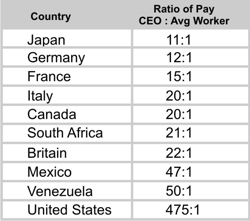The other implication of having more of the 1% in finance is that their share of income will be much more volatile.
What I found interesting was the backside of these statistics. eg.
1. The share of income going to the 1% fell from 23.5% in 2007 to 17.6% in 2009. The low point of the last 80 years was around 10%. What is the right number? Trickle down does have
some truth to it (please PB, don't let your head explode

). That is, it takes some accumulation of capital to start a business. If income were evenly distributed, the only businesses that could be formed would be those of a tradesperson. It takes capital to make capital investments.
2. 25% of the people in the 1% will not be there a year later. The article calls this stable. To me, that doesn't seem very stable at all.
3. 28% of the 1% do not have a college degree. 50% only have a bachelors. So, not only is it possible to get rich without a college degree, its possible to get uber-rich without going to college.
4. 33% of the 1% identify as Republicans. 26% as Democrats. The article says this difference is significant. I am surprised how close the two numbers are. These low percentages are hardly the basis for a class revolution.
5. Only 25% of the income of the 1% comes from interest, dividends, and capital gains. The Buffetts of the world are even rarer than I thought. 75% of the 1%'s income is taxed at ordinary personal income and corporate tax rates.
Its weird how journalists like to look at data.
James50







